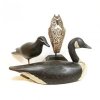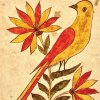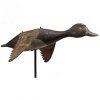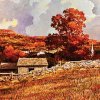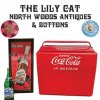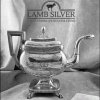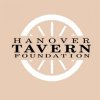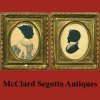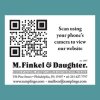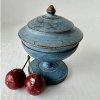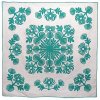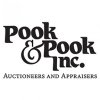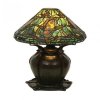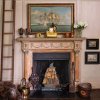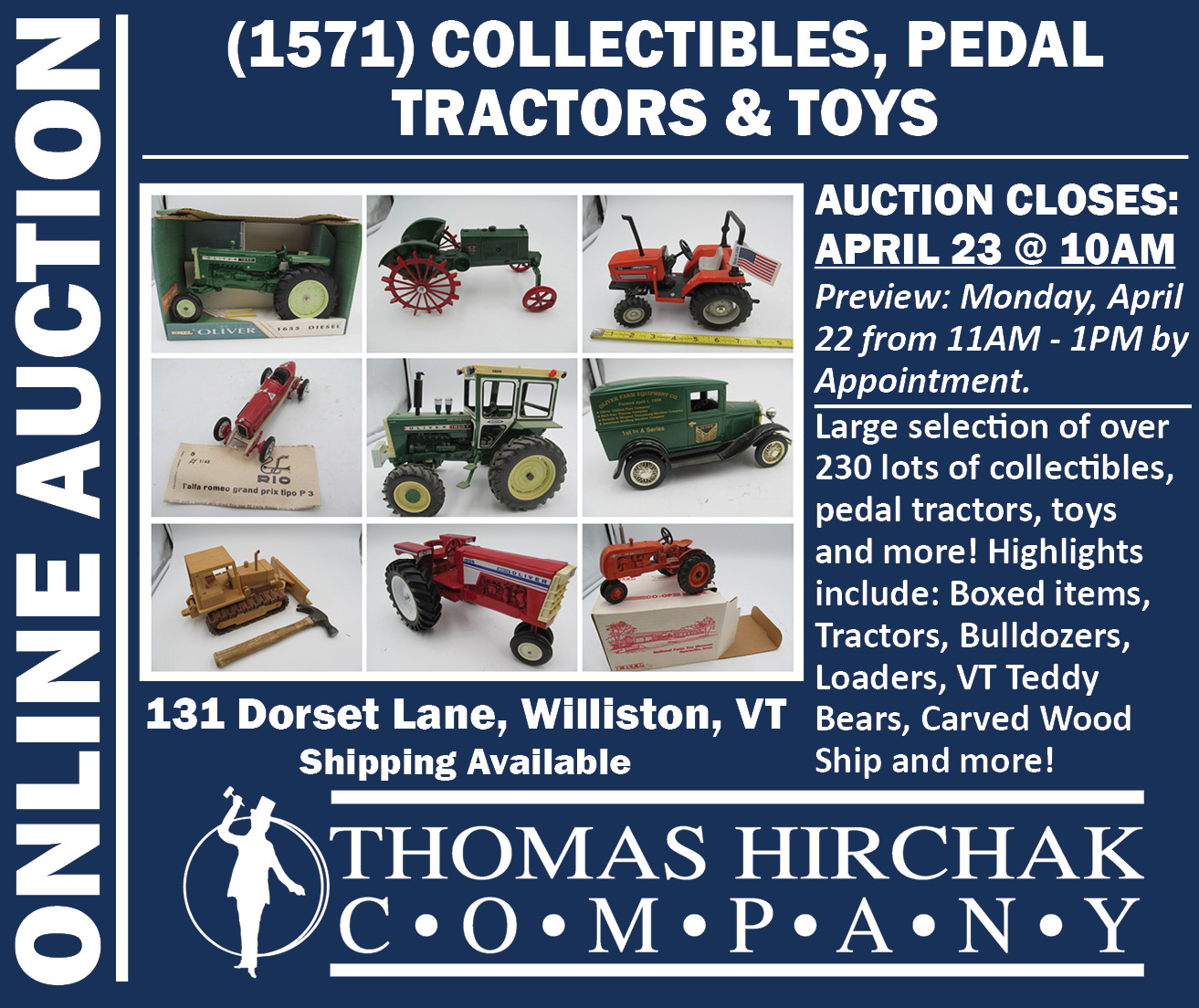Penn Dry Goods Market Antiques Show and Sale
May 14th, 2016
Pennsburg, Pennsylvania
The fourth annual Penn Dry Goods Market Antiques Show and Sale, held May 13 and 14 at the Schwenkfelder Library & Heritage Center in Pennsburg, Pennsylvania, was a grand gathering of those who appreciate textiles. Collectors, quilters, and embroiderers met curators, authors, and researchers and enjoyed two days of lectures and an old-fashioned tabletop antiques show. Just 24 dealers exhibited; to get a stand they had to bring at least 80% dry goods, defined on Wikipedia as “textiles, ready-to-wear clothing, and sundries,” distinct from what is offered at hardware and grocery stores.
There was a lot to see and a lot to learn. People stayed for hours, and the lectures, $25 a ticket, were filled. There were discoveries to be made at this show.

These are four from a collection of 12 quilt block designs on trade cards for the Newcomb Loom Works, Davenport, Iowa. Newcomb Loom Works made flying shuttle rug carpet looms in a variety of sizes. On the back of the card the company claimed that people could earn $100 a month making carpets on its rapid weaving machines. The 12 trade cards were $345.
Ever see a woven coverlet with a design of a cat up in a tree? H. & A. Seifert, Mechanicsburg, Pennsylvania, wove one in 1847. Anne Bedics of The Cat Lady Antiques, Bangor, Pennsylvania, and Lisa Breish of Anderson-Breish Antiques, Fort Washington, Pennsylvania, hung it so everyone saw it as they came up the stairs or walked out of the elevator. They also had a collection of trade cards printed with quilt block designs to promote a manufacturer of looms to make rag carpets. The Newcomb Loom Works in Davenport, Iowa, suggested on the back of the card that “widows with a family to support, or a person who is unable to do heavy outdoor work, can easily earn $100.00 a month with our improved rapid weaving machine.” Newcomb made three models of steel-frame shuttle looms that would produce 100 yards a day, 60 yards a day, or 20 yards a day (produced by the smallest, called “Weavers’ Friend”).
 There were a lot of samplers, including one from the Ackworth School, a Quaker school in West Yorkshire, England, that included needlework in its curriculum and served as a model for the Westtown School, Chester County, Pennsylvania. It was on Malvern, Pennsylvania, dealer Ruth Van Tassel’s stand. Bill Subjack of Neverbird Antiques, Surry, Virginia, offered likely the earliest southern sampler. It was stitched by Mary Guy in Charleston, South Carolina, in 1710. He also showed the only known sampler from St. Augustine, Florida, and the earliest known surviving sampler made in California at Mission San Diego. It was attributed to Maria Tomasa Pico, sister of Pio Pico, the last Mexican governor of Alta California. Another sampler was made by Isabella Chamberlain, the daughter of missionaries, in 1849 when she attended the Punahou School in Hawaii, the same school that Barack Obama attended.
There were a lot of samplers, including one from the Ackworth School, a Quaker school in West Yorkshire, England, that included needlework in its curriculum and served as a model for the Westtown School, Chester County, Pennsylvania. It was on Malvern, Pennsylvania, dealer Ruth Van Tassel’s stand. Bill Subjack of Neverbird Antiques, Surry, Virginia, offered likely the earliest southern sampler. It was stitched by Mary Guy in Charleston, South Carolina, in 1710. He also showed the only known sampler from St. Augustine, Florida, and the earliest known surviving sampler made in California at Mission San Diego. It was attributed to Maria Tomasa Pico, sister of Pio Pico, the last Mexican governor of Alta California. Another sampler was made by Isabella Chamberlain, the daughter of missionaries, in 1849 when she attended the Punahou School in Hawaii, the same school that Barack Obama attended.

Ruth Van Tassel of Van Tassel-Baumann American Antiques, Malvern, Pennsylvania, asked $6400 for this English Quaker Ackworth School sampler by Maria Blake. The Ackworth School curriculum was the model for Westtown School in Chester County, and it included needlework.
Some dealers were new to the show circuit or showing here for the first time. Ani DiFazio, a specialist in early clothing from Silver Spring, Maryland, has been a collector for years, but this was her first show.
Tex Johnson, age 97, has done every Penn Dry Goods show. She said she had a very good show, selling her best quilt during setup. That was because Julie Silber, a well-known Berkeley, California, dealer, bought it as she was hanging it up. Silber shared a stand with New York City dealer Jane Lury, and they bought several quilts from a number of dealers early in the show. Silber and Lury also sold several special quilts. Their stand became a virtual seminar room. Barbara Garrett, a mathematician and local quilt historian, was pleased to find a Bowmansville Star quilt on the wall of their stand.
“Quilts of this design were all made at a crossroads known as Bowmansville in Lancaster County from the late 1800s up through the 1920s,” she said, pointing out the postage stamp construction, zigzag border, and the design of a large star framed by squares. “I have seen thirty or forty of them, most of them made by Mennonite women ‘just for nice.’ They were not made to be slept under; they were designed to decorate the bed and came out of the blanket chest on Sundays. Those who came to call after church laid their shawls on them.”

This late 19th-century schoolgirl watercolor book, signed “Edith A. Stevenson, Fall Term 1898,” was $1250 from Lisa Breish of Anderson-Breish Antiques, Fort Washington, Pennsylvania, and Anne Bedics, The Cat Lady Antiques, Bangor, Pennsylvania.
Candace Perry, curator of the Schwenkfelder Library & Heritage Center, came up with the idea for this show and gathering of textile enthusiasts. Kathy Lesieur, a textile historian and a Schwenkfelder Library & Heritage Center board member, agreed to be show manager. They organized the lectures (11 were given over the weekend) on subjects that ranged from Kathy Lesieur’s talk on woolwork samplers of the Lehigh Valley to a talk called “Patchwork Fever” by Deborah Kraak, an independent museum professional. Kraak gave a reappraisal of “cheater cloth,” which she prefers to call patchwork prints, as they were known beginning in 1873 in England and soon after in America at the time of the centennial. Nancy Hahn of Bowie, Maryland, was one of several dealers who had some of this simulated patchwork fabric for sale. She had one piece printed with an illustration depicting the Gilbert and Sullivan operetta H.M.S Pinafore, first staged in London in 1878.
“This is the easiest show to do,” said Hahn. “The trustees of the library and heritage center unload our vans, deliver our boxes to our spaces, and feed us during setup,” she said. “Students from the Perkiomen School help us out.”

Two needle books made out of fancy silk dress fabrics, from Delaware, were $1500 from Randi Ona.

Julie Silber found this 1870-80s eagle quilt in Ohio but thinks it was made in Missouri. The center is unusual, as are the light blue and deep red eagles and meandering leaf border. It was $3950, and it sold.
The Schwenkfelder Library & Heritage Center mounts special exhibits at show time. This year the exhibition “Within and Without: The Art of the Book” was about the art of book binding and book illustration. Fraktur bookplates, some framed, others still in books, all from the permanent collection, filled an entire room. Also on view were four of the 11 known townscape wool embroidered pictures made by young girls in Worcester Township, Montgomery County, Pennsylvania, in the mid-19th century.
Grassroots specialty shows like this one keep the enthusiasm for Americana alive.
For more information go to (www.schwenkfelder.com).

There were lots of buttons. These circa 1900 carved bone buttons, “new old stock,” were $20 for a strand of 18 buttons from Linda Sarubin of the Gatchellville Store, New Park, Pennsylvania.

Rose B. Berry of Richmond, Virginia, offered cloth dolls, left to right, for $395, $275 for the Amish doll, and $295.

John and Peggy Bartley of Old Farm Antiques, Reading, Pennsylvania, asked $295 for this 19th-century reversible Amish petticoat.

Turkey redwork was popular in the last quarter of the 19th century. This pillow sham in Turkey red outline stitch was $125 from Sarabeth Abir of Serapi Antiques, Huntingdon Valley, Pennsylvania. She said designs were sometimes preprinted or came as iron-on designs with Turkey red thread to embroider an outline.

Margaret Schenk of Ulysses, Pennsylvania, asked $32 for the large scissors and $45 for the smaller pair in an unusual size.
Originally published in the July 2016 issue of Maine Antique Digest. © 2016 Maine Antique Digest




